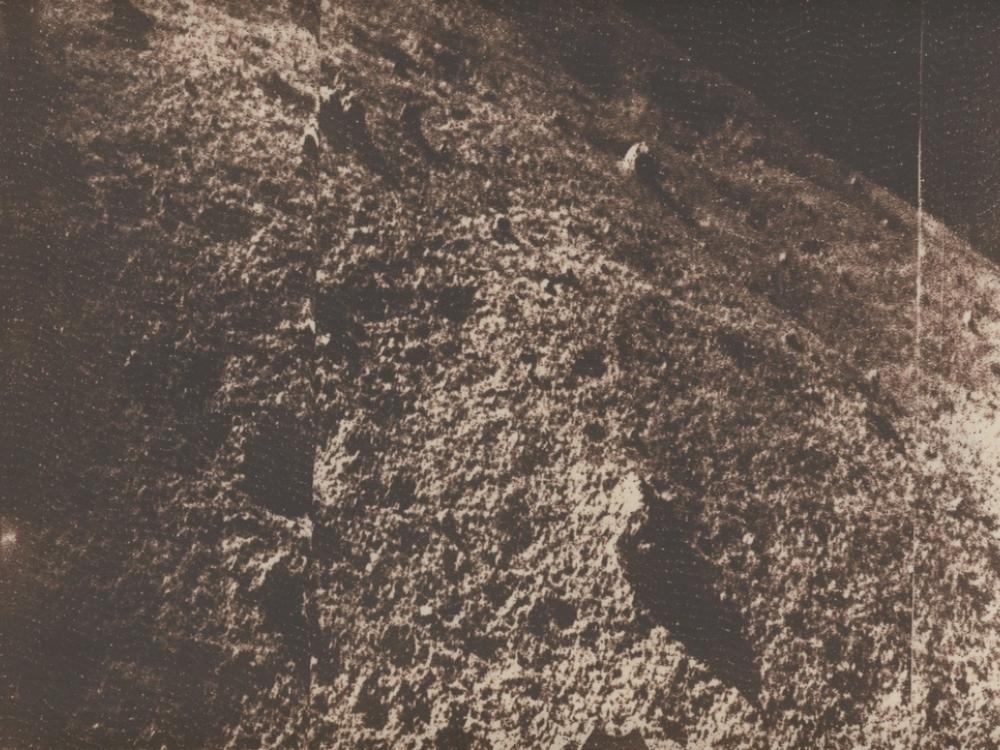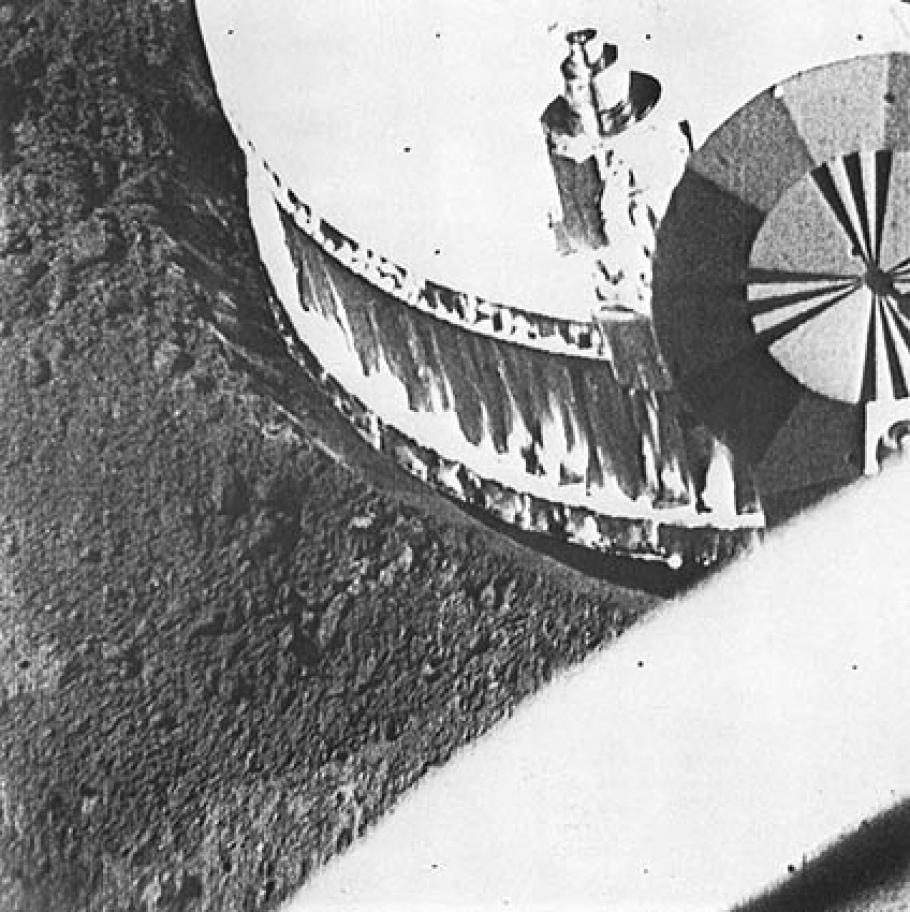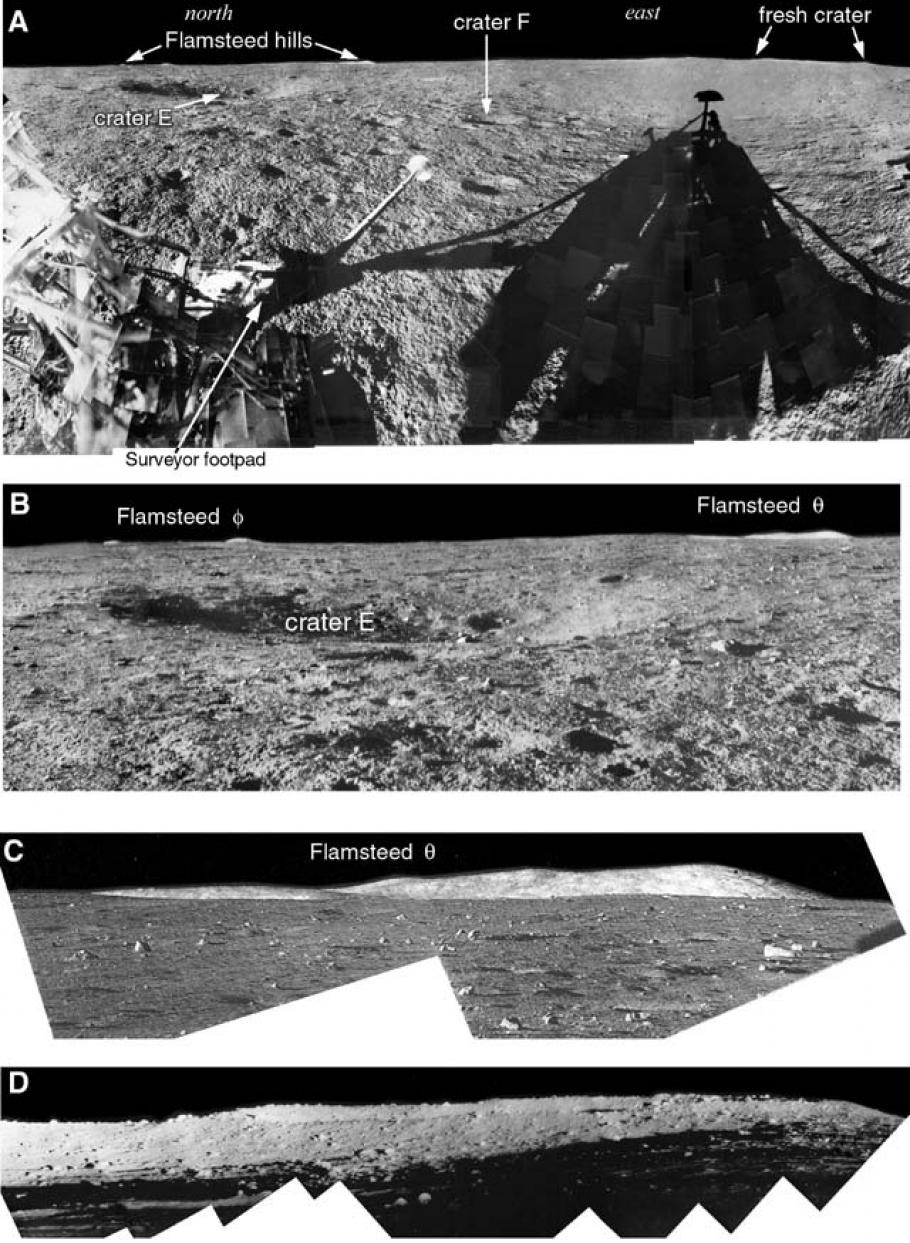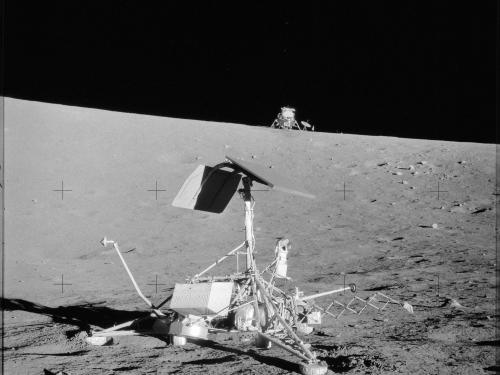
The First Pictures from the Moon’s Surface
Jun 15, 2016
By Michael Neufeld
Half a century ago, in February and June 1966, robotic spacecraft first landed on the Moon. I vividly remember those events from my days as a 14-year-old space buff. On February 3, the Soviet Union’s Luna 9 thumped down on the vast lava plain known as Oceanus Procellarum (Ocean of Storms), after a number of failed attempts. A Soviet stamp shows its landing configuration, which used air bags to cushion its fall. On the right is the first picture transmitted, from the turret camera in the cylinder on top.
This image was intercepted by the Jodrell Bank observatory in England, which beat the Soviets to releasing it. The quality in this version was less than ideal, but it was the one that made the newspapers like my hometown Calgary Herald.
Luna 9, which was only powered by batteries, lasted three days, enough to transmit a panorama from very close to the surface
The United States’ first successful landing on the Moon came on June 2, when NASA’s Surveyor 1 touched down on another part of Oceanus Procellarum, which is the large dark area on the right side of the full Moon. That landing, I remember especially well, as it was carried live on TV from the Jet Propulsion Laboratory in Pasadena, California. It unfolded around midnight, Calgary time, and no one knew whether it would work or not. One of the first pictures Surveyor 1 took was of its foot pad.
The first picture captured by Surveyor 1 of its foot pad.
This image, along with data transmitted from strain gauges in the three landing legs, gave valuable information to NASA about the bearing strength of the lunar surface, vital for planning the Apollo missions that were to follow.
Surveyor was a more sophisticated, solar-powered spacecraft. The Museum has a test vehicle made to look like the second successful lander, Surveyor 3. The solar panel is on top and the flat panel for the main antenna to transmit to Earth is behind it. The TV camera is located in the white cylinder with the oval mirror under the solar panel. The Surveyor 3 had a scoop (lower right) for testing the soil’s characteristics, but it was not on Surveyor 1.
The Surveyor series was designed to carry out soft landings on the Moon and provide data about its surface and possible atmosphere. These were the first U.S. probes to soft-land on the Moon.
Surveyor 1 shut down during the 14-day lunar night but revived and transmitted pictures until July 14. Even after that it was able to send back engineering data during lunar days until January 1967. Its panoramas have been processed more recently by Philip J. Stooke of the University of Western Ontario.
Panoramas captured by Surveyor 1 and recently published by Philip J. Stooke of the University of Western Ontario.
Those were exciting days for space enthusiasts and for the general public. We were witnessing the first pictures taken from the surface of another world. That same summer, spacecraft also went into orbit around the Moon for the first time. Luna 10 and Lunar Orbiter 1 transmitted many more images, as did their successors. Three years later, humans walked on the Moon, helped in no small part by their robotic precursors.
Related Topics
You may also like
Related Objects
We rely on the generous support of donors, sponsors, members, and other benefactors to share the history and impact of aviation and spaceflight, educate the public, and inspire future generations. With your help, we can continue to preserve and safeguard the world’s most comprehensive collection of artifacts representing the great achievements of flight and space exploration.





